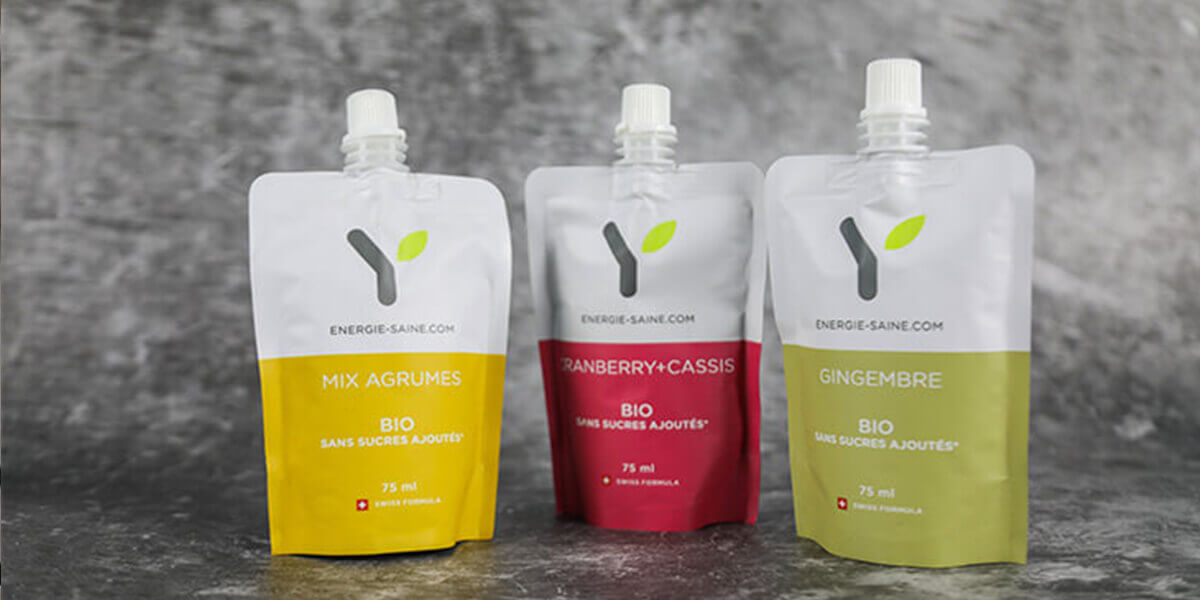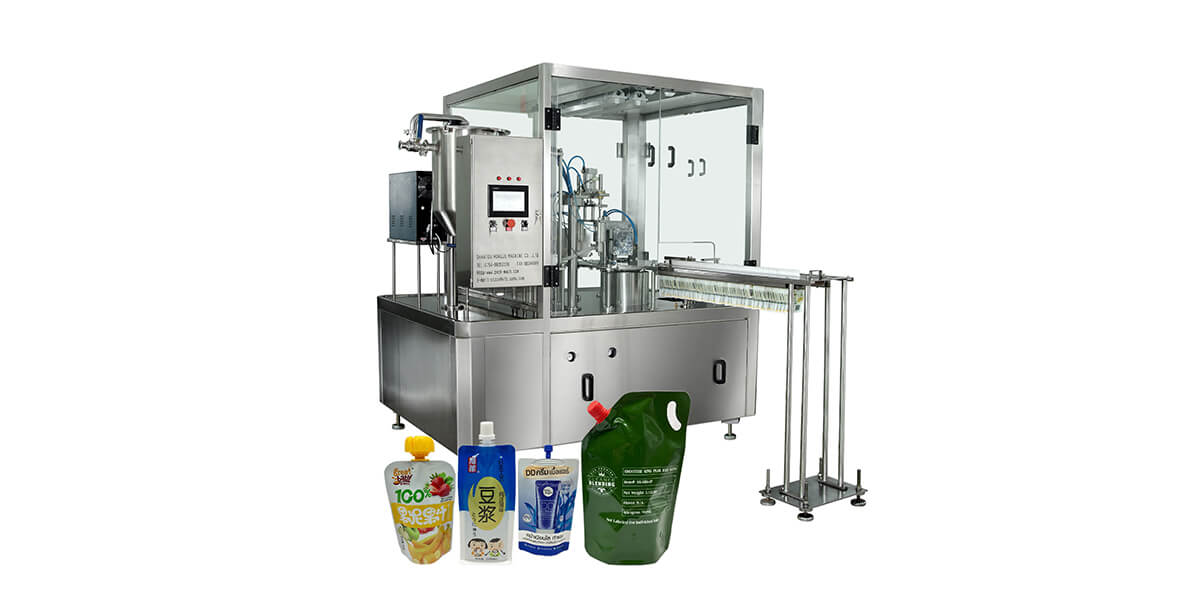A spout pouch refers to a flexible packaging bag that has a tube or lip protruding from the container. Designed for liquid or semi-liquid products, it is becoming an economical and environmentally friendly alternative to plastic bottles, cans, and barrels. They come in different sizes, shapes, and styles, making it easy to find one that suits your preferences.
1. How to seal the spout pouch?
Technically speaking, the spout pouch is sealed with a special sealing machine. Heat sealing is the last step in packing the product in this bag.
Generally, two main types of plastics are used to produce spout pouches and they include thermosets and thermoplastics. You can close the barrier bag made of thermoplastic material repeatedly.
On the other hand, spout pouches made of thermoset plastic are permanent. This is the main industrial technique for sealing spout pouches.

1) Heat-sealed spout pouch
Heat sealing is an ideal method for sealing spout pouches in both domestic and industrial applications. Essentially, it delivers neat and organized results, providing ultimate satisfaction for you and your clients.
Additionally, the method increases product safety within the spout pouch by preventing product exposure to contaminating elements. Additionally, heat sealing the spout pouch reassures customers that the product has never been opened.
For a spout pouch to be heat-sealed successfully, its interior must be laminated and heat-sealable. Also, you need to have different materials and items in order to effectively heat seal the spout pouch.
A) Consider sealing the spout pouch
Make sure you have a good quality and sturdy spout pouch. The design structure of the pouch is critical in determining the effectiveness of the sealing effect. Also, it has to be unique as this allows you to maximize your profits.
Also, make sure your spout pouch is the right size, shape, and design for the specific product you are packing. This is crucial as it sets you apart from the competition and allows customers to easily identify the product.
B) Choose a heat sealer for your pouches
It is imperative to choose a suitable heat sealer to seal the pouch according to the pouch material. Also, determine the thickness and width of the product, as this will make it easy to buy a sealer that will guarantee the proper seal.
In general, you can always choose between an impulse sealer and a direct sealer. An impulse sealer barely warms up; instead, it seals by applying a pulse of energy to a specific sealing part, followed by immediate cooling.
It uses electricity when the jaw is lowered, so it is ideal for sealing mouthpiece pouches made of thermoplastic material.
First, this sealer works by preheating a portion of the spout pouch, then quickly placing it under intense heat, and then cooling it down immediately.
A direct sealer, also known as a hand-pressure heat sealer, uses power as long as it is left open.
Essentially, this method of spout sealing keeps the jaws at a constant temperature so that the heat is evenly distributed to create a strong seal. It has better heat permeability, so it is suitable for ziplock pouches with thicker sealing materials.

C) Spacious working area for sealing spout pouches
A spacious workspace is ideal as it offers the right amount of space, comfort, and safety. Choose a relatively flat surface with a lot of light and an ideal temperature.
With all these elements in place, you can proceed to start sealing the spout pouch using the following steps;
a) Lower the machine setting and adjust accordingly.
b) Fill the pouch with the desired contents, but do not let the product fill the zipper area.
c) Gently slide your finger over the zipper to securely close the pouch.
d) Place the top of the filled spout pouch between the seal strips.
e) Press moderately for about 2-3 seconds, then release and you will have a sealed spout pouch.
If the spout pouch won’t seal properly, adjust the heat upwards until it seals completely. Also, you can use a double-pulse heat sealer where both sides of the jig are heated. Essentially, this makes it easy to quickly seal 10 mil spout pouches.
2. Ideal spout pouch sealer
Technically speaking, spout pouches and other barrier bags are usually made of multiple layers. To form a single homogeneous structure, the layers are laminated.
Technically speaking, spout pouches and other barrier bags are usually made of multiple layers. To form a single uniform structure, the layers are laminated together.
Heat sealers are suitable for sealing these layers and making them into a unitary structure. Different types of spout pouches can be sealed with a spout pouch sealer.
Impulse sealers are commonly used to seal different spouted pouches. However, you can use other types of pouch sealers depending on the workload.
Essentially, using a machine is the most practical method if you are sealing multiple spout pouches. Manual sealers are unable to seal thousands of spout pouches. Instead, it takes longer to complete and is a relatively inefficient process.

3. The cost of the spout pouch sealing machine
There is no definite price for buying a spout pouch sealer. Usually, it depends on several factors, including the size and design of the device. It also depends on the brand of specific sealer you buy.
However, you can get a basic spouted pouch sealer for $100, mostly for home use. You can also find a relatively premium one for around $400-500.
But when it comes to industrial spout sealers, you can spend at least $1000 to get a desirable product with advanced features. With a budget like this, you can get the right spout pouch for filling and sealing delicate pouches.
